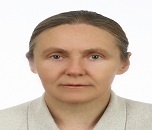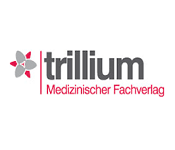Theme: Emerging Issues and New Developments in Field of Influenza Research
Influenza 2016
Track 1: Influenza Vaccines: Designs and Developments
Influenza vaccines are vaccines that protect against influenza. During this time, influenza viruses are circulating at higher levels in the U.S. population. There are two different types of influenza vaccines, trivalent and quadrivalent. Trivalent vaccines protect against two influenza A viruses (an H1N1 and an H3N2) and an influenza B virus. Quadivalent vaccines protect against two influenza A viruses and two influenza B viruses. Flu vaccines are available either as: a trivalent or quadrivalent injection, which contains the inactivated form of the virus Or a nasal spray of live attenuated influenza vaccine (LAIV, Q/LAIV), which contains the attenuated or weakened form of the virus. An annual seasonal influenza vaccine (either the influenza shot or the nasal spray influenza vaccine) is the best way to reduce the chances that you will get seasonal influenza and spread it to others. Influenza vaccines cause antibodies to develop in the body about two weeks after vaccination. These antibodies provide protection against infection with the viruses that are in the vaccine.
Influenza vaccine market is estimated at $2.9 billion in 2011 to $3.8 billion by 2018. In USA vaccine market growth is $1.6 billion in 2011 to $2.2 billion in 2018.
Related Conference
2nd International Conference on Flu Oct 31-Nov 02 2016, USA; 3rd Euro-Global Conference on Infectious Diseases September 5-6 2016, Germany; 3rd Euro-Global Emerging Infectious Diseases Conferences September 5-6, 2016 Frankfurt, Germany; 14th Annual Congress on Influenza Respiratory Diseases & Infections : Vaccines and Therapeutics December 01-02 2016, USA; International Conference on Travel Medicine, Vaccines & Therapeutics August 1-2 2016, USA; World Congress on Children Vaccines October 10-12 2016, Malaysia; Influenza Vaccines for the World October 6-9 October 2015, Portugal; Modern Vaccines Adjuvants Formulation May 18-20 2016, Denmark; 2016 ISV Annual Congress October 02-04 2016, USA; 10th Vaccine Congress September 04-07, 2016, The Netherland; 2016 Kansas Immunization Conference June 07-09, 2016, USA.
Track 2: Pathogenicity of Influenza Virus
Influenza virus is introduced into the airways by aerosol or by contact with saliva or other respiratory secretions from an infected individual, it binds to and replicates in epithelial cells of both the upper and lower respiratory tract. Influenza virus is a negative-sense RNA virus. Its eight RNA genomic segments are always found in association with viral polypeptides, including the three subunits of RNA-dependent RNA polymerases, PB1, PB2, and PA, and the viral nucleoprotein, NP, to form viral ribonucleoprotein complexes. Viral replication combined with the immune response to infection lead to destruction and loss of the epithelial cells the respiratory mucosa. Cough and weakness may persist for up to 2 weeks after infection. Influenza enters the host through the airways. Influenza complications of the upper and lower respiratory tract are common. These include otitis media, sinusitis, bronchitis, and croup. Pneumonia is among the more severe complications of influenza infection, an event most frequently observed in children or adults. Human influenza leads to complex cytopathic effects due to downregulation of host cell protein synthesis and apoptosis, predominantly in the the airways epithelial cells. Apoptosis is mediated by both Fas-mediated mechanisms and Fas-independent signals, which initiates a caspase cascade. NA can activate latent TGF-β on the cell surface by facilitating cleavage of TGF-β into its active form that up-regulates pro-apoptotic genes. Apoptosis occurs also in lymphocytes explaining the lymphopenia observed during acute infection.
Related Conference
2nd International Conference on Flu Oct 31-Nov 02 2016, USA; 4th International Congress on Bacteriology and Infectious Diseases May 16-18 2016, USA; 3rd Euro-Global Emerging Infectious Diseases Conferences September 5-6, 2016 Frankfurt, Germany; 2nd International Conference on Retroviruses and Novel Drugs June 30-July 1 2016, South Africa; 3rd Euro-Global Conference on Infectious Diseases September 5-6 2016, Germany; 14th Annual Congress on Influenza Respiratory Diseases & Infections : Vaccines and Therapeutics December 01-02 2016, USA; Annual Influenza Update, September 17 2015, USA; World Vaccine Congress March 29-31 2016, USA; Options IX for the Control of Influenza August 24-26 2016; Fifth ESWI Science Policy Flu Summit September 28, 2016, Belgium ; 5th Influenza Research & Development June 01-02, 2016; USA.
Track 3: Influenza: Causes, Symptoms and Prevention
There are three types of Influenza viruses: A, B, and C. Type A and type B viruses are responsible for the seasonal outbreaks of influenza. Influenza viruses are constantly changing, with new strains appearing regularly. If someone had influenza in the past, their body has already made antibodies to fight that particular strain of the virus. If future influenza viruses are similar to those encountered previously, either by having the disease or by vaccination, those antibodies may prevent infection or lessen its severity. Complications of influenza can include Streptococcus pneumonia, ear infections, sinus infections, dehydration, and worsening of chronic medical conditions, such as congestive heart failure, asthma, or diabetes. But antibodies against flu viruses encountered in the past can't protect from new influenza subtypes that can be very different immunologically from previously infection. Influenza infection takes 1 to 4 days to incubate in humans, but infected people become contagious before symptoms appear, often just the day after the virus enters the body. Adults remain infectious for about 6 days, and children remain infectious for up to 10 days.
Global influenza market to be worth $6.3 billion in 2014 for a compound annual growth rate (CAGR) of 2.7%.
Related Conferences
2nd International Conference on Flu Oct 31-Nov 02 2016, USA; 3rd Euro-Global Emerging Infectious Diseases Conferences September 5-6, 2016 Frankfurt, Germany; 3rd Euro-Global Conference on Infectious Diseases September 5-6 2016, Germany; 14th Annual Congress on Influenza Respiratory Diseases & Infections : Vaccines and Therapeutics December 01-02 2016, USA; International Conference on Travel Medicine, Vaccines & Therapeutics August 1-2 2016, USA; World Congress on Children Vaccines October 10-12 2016, Malaysia; Influenza Vaccines for the World October 6-9 October 2015, Portugal; 2016 ISV Annual Congress October 02-04 2016, USA; 10th Vaccine Congress September 04-07, 2016, The Netherland; 2016 Kansas Immunization Conference June 07-09, 2016, USA; Modern Vaccines Adjuvants Formulation May 18-20 2016, Denmark.
Track 4: Global Market for Influenza Vaccine Manufactures
The majority of the currently available licensed seasonal influenza vaccines are prepared using eggs for the following vaccine types. However, some manufacturers employ cell culture for the production of their vaccines.
· Whole virus vaccines consisting of inactivated viruses.
· Split virus vaccines consisting of inactivated virus particles disrupted by detergent treatment.
· Subunit or surface antigen vaccines consisting essentially of purified hemagglutinin and neuraminidase from which other virus components have been removed.
· Live attenuated (cold-adapted) virus vaccines consisting of weakened (non-pathogenic) whole virus.
To produce the split virus and subunit vaccines the whole virus is subjected to disruption with a surfactant, which solubilizes the viral membrane. For subunit vaccines the internal subviral core of the virus is separated from the surface proteins on the basis of their differing sedimentation rates. With split virus vaccines, the choice and use of surfactant ensures that the subviral core itself is disassembled.
In subunit vaccines, HA and NA have been further purified by removal of other viral components. Some formulations include adjuvants and most multidose vials contain the preservative thiomersal. Live, attenuated influenza vaccines have been based on a temperature-sensitive variant vaccine virus strains that replicate well in the nasopharynx but poorly in the lower respiratory tract.
Related Conferences
2nd International Conference on Flu Oct 31-Nov 02 2016, USA; 3rd Euro-Global Emerging Infectious Diseases Conferences September 5-6, 2016 Frankfurt, Germany; 14th Annual Congress on Influenza Respiratory Diseases & Infections : Vaccines and Therapeutics December 01-02 2016, USA; 2nd World Congress on Infectious Diseases August 24-26 2016, USA; 4th International Congress on Bacteriology and Infectious Diseases May 16-18 2016, USA; 2nd International Conference on Retroviruses and Novel Drugs June 30-July 1 2016, South Africa; World Vaccine Congress March 29-31 2016, USA; 5th Influenza Research & Development June 01-02, 2016; USA; Fifth ESWI Science Policy Flu Summit September 28, 2016, Belgium ; Options IX for the Control of Influenza August 24-26 2016 USA; 10th Vaccine Congress September 04-07, 2016, USA.
Track 5: Influenza Vaccines: Safety and Effectiveness
Annual influenza vaccines is the best way to reduce your chances of getting the seasonal flu and spreading it to others. Efficacy of vaccines is the extent to which it reduces risk of disease under controlled conditions, and its effectiveness, the observed reduction in risk after the vaccine is put into use. Influenza vaccines generally show high efficacy, as measured by the antibody production in animal models or vaccinated people. Vaccines work by spurring the immune system into action. The effectiveness of a vaccine depends on how vigorously the immune system responds to it. If someone has a weak immune system to begin with, a vaccine may just not work as well. Many chronic illnesses can weaken a body’s defenses. The vaccines are generally safe. In children fever occurs in between 5 to 10%, as may muscle pains or feeling tired. In certain years, the vaccine causes Guillain Barre Syndrome in older people in about one per million doses. It should not be given to those with severe allergies to eggs or to previous versions of the vaccine. They come in both inactive and weakened viral forms. The inactive version should be used those who are pregnant. They come in forms that are injected into a muscle, sprayed into the nose, or injected into the middle layer of the skin.
The market of Influenza consists of products to prevent, treat, and diagnose influenza viruses during both seasonal and pandemic episodes. The global influenza market will grow from nearly $3.8 billion in 2012 to $4 billion in 2013. Global influenza market to be worth $6.3 billion in 2014 for a compound annual growth rate (CAGR) of 2.7%.
Related Conferences
2nd International Conference on Flu Oct 31-Nov 02 2016, USA; 3rd Euro-Global Emerging Infectious Diseases Conferences September 5-6, 2016 Frankfurt, Germany; 3rd Euro-Global Conference on Infectious Diseases September 5-6 2016, Germany; 14th Annual Congress on Influenza Respiratory Diseases & Infections : Vaccines and Therapeutics December 01-02 2016, USA; International Conference on Travel Medicine, Vaccines & Therapeutics August 1-2 2016, USA; World Congress on Children Vaccines October 10-12 2016, Malaysia; Influenza Vaccines for the World October 6-9 October 2015, Portugal; Modern Vaccines Adjuvants Formulation May 18-20 2016, Denmark; 2016 ISV Annual Congress October 02-04 2016, USA; 10th Vaccine Congress September 04-07, 2016, The Netherland; 2016 Kansas Immunization Conference June 07-09, 2016, USA.
Track 6: Antiviral Drug Development and Treatment Strategies, Including Vaccination
When used for treatment, antiviral agents can lessen symptoms and shorten the time you are sick by 1 or 2 days. They also can prevent serious flu complications, like pneumonia. Outbreaks of influenza occur every year and typically reach epidemic levels at some part of the season. Antiviral drugs are a second line of defense system against influenza infection. Antiviral drugs are recommended for both treatment and prevention of flu. Antiviral drugs work best when taken within 48 hours of onset of flu symptoms, but they may still offer benefits when taken later. These medications may reduce the duration of flu by one to two days and prevent severe flu complications. The antiviral drugs have been approved for treatment of acute uncomplicated influenza and for some preventive uses. Tamiflu (oseltamivir phosphate), Relenza (zanamivir) and Rapivab (peramivir) are the three FDA-approved influenza antiviral drugs recommended by CDC for use against recently circulating influenza viruses. The effect of specific antiviral strategies in serious or life-threatening influenza is not established from clinical trials conducted to support licensure of oral oseltamivir, inhaled zanamivir, or intravenous peramivir. Antiviral drugs are medicines that decrease the ability of influenza viruses to reproduce. Antiviral drugs directly target the viruses responsible for influenza infections. Certain drugs are used prophylactically, that is they are used in uninfected individuals to guard against infection.
Related Conferences
2nd International Conference on Flu Oct 31-Nov 02 2016, USA; 3rd Euro-Global Emerging Infectious Diseases Conferences September 5-6, 2016 Frankfurt, Germany; 3rd Euro-Global Conference on Infectious Diseases September 5-6 2016, Germany; International Conference on Travel Medicine, Vaccines & Therapeutics August 1-2 2016, USA; World Congress on Children Vaccines October 10-12 2016, Malaysia; 2nd World Congress on Infectious Diseases August 24-26 2016, USA; Options IX for the Control of Influenza August 24-26 2016 USA; Fifth ESWI Science Policy Flu Summit September 28, 2016, Belgium ; 5th Influenza Research & Development June 01-02, 2016; USA;10th Vaccine Congress September 04-07, 2016, USA; World Vaccine Congress March 29-31 2016, USA.
Track 7: Advances in Viral Detection and Identification Technologies
Laboratory diagnosis of Influenza has become a cornerstone of the prevention, containment, surveillance, and treatment of the associated illness. The most common are called “rapid influenza diagnostic tests.” These tests can provide results in 30 minutes or less. The laboratory diagnosis of influenza uses a wide range of techniques including rapid immunoassays, immunofluorescence, virus culture methods, and increasingly sophisticated molecular assays. Laboratory identification of human influenza virus infections is commonly performed using direct antigen detection, virus isolation in cell culture, or detection of influenza-specific RNA by reverse transcriptase-polymerase chain reaction (RT-PCR). During any time of the year, influenza should be considered in immunocompetent and immunocompromised persons with acute febrile respiratory symptoms who are epidemiologically linked to an influenza outbreak tests that yield results in a timely manner that can influence clinical management (decisions on initiation of antiviral treatment, impact on other diagnostic testing, antibiotic treatment decisions, and infection control practices) are recommended to guide patient care. Proper and rapid diagnosis is essential to control influenza infection by antiviral treatment and to avoid the inappropriate use of antibiotics.
Market revenue is forecast to increase at a five-year compound annual growth rate (CAGR) of 8% from 2013 to 2018, totaling nearly $6 billion in 2018.
Related Conferences
2nd International Conference on Flu Oct 31-Nov 02 2016, USA; 3rd Euro-Global Emerging Infectious Diseases Conferences September 5-6, 2016 Frankfurt, Germany; 14th Annual Congress on Influenza Respiratory Diseases & Infections : Vaccines and Therapeutics December 01-02 2016, USA; 2nd World Congress on Infectious Diseases August 24-26 2016, USA; 4th International Congress on Bacteriology and Infectious Diseases May 16-18 2016, USA; 2nd International Conference on Retroviruses and Novel Drugs June 30-July 1 2016, South Africa; World Vaccine Congress March 29-31 2016, USA; 5th Influenza Research & Development June 01-02, 2016; USA; Fifth ESWI Science Policy Flu Summit September 28, 2016, Belgium ; Options IX for the Control of Influenza August 24-26 2016 USA; 10th Vaccine Congress September 04-07, 2016, USA.
Track 8: Computational Biology Application for Influenza Research
Influenza virus is a member of the Orthomyxoviridae family of segmented, negative-strand RNA viruses. Influenza’s eight genomic segments encode 10 or 11 proteins, depending on whether the PB1-F2 ORF is present. New high-throughput methods in biology are producing new patterns which would not be detectable without systematic and automated approaches because of the volume and often noisy nature of the data at an unprecedented rate. Human influenza is a complex pathogen, mostly because of its capacity to vary its surface proteins to escape immune surveillance. There are two main patterns of change. Although antiviral drugs and prophylactic vaccines have been developed, the rapid evolution of influenza facilitates the generation of drug-resistant and vaccine-resistant variants; therefore, this virus remains a major public health threat. Each influenza season provides new challenges and uncertainties to both the public as well as the public health community. A comparison of hemagglutinin sequence conservation and epitope coverage information revealed highly conserved protein regions that can be recognized by the human adaptive immune system as possible targets for inducing cross-protective immunity.
Related Conferences
2nd International Conference on Flu Oct 31-Nov 02 2016, USA; 3rd Euro-Global Emerging Infectious Diseases Conferences September 5-6, 2016 Frankfurt, Germany; 3rd Euro-Global Conference on Infectious Diseases September 5-6 2016, Germany; 14th Annual Congress on Influenza Respiratory Diseases & Infections : Vaccines and Therapeutics December 01-02 2016, USA; International Conference on Travel Medicine, Vaccines & Therapeutics August 1-2 2016, USA; World Congress on Children Vaccines October 10-12 2016, Malaysia; Influenza Vaccines for the World October 6-9 October 2015, Portugal; Modern Vaccines Adjuvants Formulation May 18-20 2016, Denmark; 2016 ISV Annual Congress October 02-04 2016, USA; 10th Vaccine Congress September 04-07, 2016, The Netherland; 2016 Kansas Immunization Conference June 07-09, 2016, USA.
Track 9: Host Genetics of Infection and Immunology
Innate and adaptive immune responses are stimulated when the influenza virus infects the cells of the respiratory tract. Innate immune system recognizes virus-infected cells through mechanisms that are not antigen-specific, the cytokines produced during this early phase of the host's defense do facilitate activation of subsequent antigen-specific adaptive immune mechanisms. Transition from the innate to the adaptive immune response is the stimulation of Toll-like receptors (TLRs) in endosomes of antigen-presenting cells (primarily dendritic cells). Stimulation of immunological memory accelerates the adaptive response, which is delayed during a primary exposure to the antigen. A major aspect of the adaptive immune response involves virus binding to immunoglobulin receptors on B lymphocytes, which subsequently differentiate to plasma cells that produce virus-specific antibodies. Activation of the adaptive immune response occurs through peptides derived from viral proteins, which are presented on antigen-presenting cells to the T lymphocytes. Because of the absence of RNA proofreading enzymes, the RNA-dependent RNA polymerase that copies the viral genome makes an error roughly every 10 thousand nucleotides, which is the approximate length of the influenza vRNA. Hence, the majority of newly manufactured influenza viruses are mutants; this causes antigenic drift, which is a slow change in the antigens on the viral surface over time. The separation of the genome into eight separate segments of vRNA allows mixing or reassortment of vRNAs if more than one type of influenza virus infects a single cell. The resulting rapid change in viral genetics produces antigenic shifts, which are sudden changes from one antigen to another. These sudden large changes allow the virus to infect new host species and quickly overcome protective immunity.
Related Conferences
2nd International Conference on Flu Oct 31-Nov 02 2016, USA; 3rd Euro-Global Emerging Infectious Diseases Conferences September 5-6, 2016 Frankfurt, Germany; 3rd Euro-Global Conference on Infectious Diseases September 5-6 2016, Germany; International Conference on Travel Medicine, Vaccines & Therapeutics August 1-2 2016, USA; World Congress on Children Vaccines October 10-12 2016, Malaysia; 2nd World Congress on Infectious Diseases August 24-26 2016, USA; Options IX for the Control of Influenza August 24-26 2016 USA; Fifth ESWI Science Policy Flu Summit September 28, 2016, Belgium ; 5th Influenza Research & Development June 01-02, 2016; USA;10th Vaccine Congress September 04-07, 2016, USA; World Vaccine Congress March 29-31 2016, USA.
Track 10: Influenza Lung Immunology: Major Aspects
Influenza causes an acute infection of the host and initiates a cascade of immune reactions activating almost all parts of the immune defense system. Most of the initial innate response, including cytokine release (IFNα/β), influx of neutrophil granulocytes or natural killer cells, and cell activation, is responsible for the acute onset of the clinical symptoms. Influenza viruses, however, encode in the non-structural protein 1 (NS1) mechanisms to evade and antagonize the IFN α/β response. NS1 is likely to sequester viral dsRNA which prevents recognition of this dangerous molecule by cellular sensors which would otherwise trigger IFN α/β release. Evasion from the host immune response requires a lot of viral proteins to associate with and inhibit cellular proteins with antiviral functions. Because viral genomes are typically 10,000 to 100,000 times smaller than the human genome, most or all steps of virus infection depend on exploiting host gene functions. Identifying such host genes is currently a crucial frontier in understanding infection. These host genes also are attractive targets for viral control, since they are not subject to the high mutation rates by which viruses escape from antivirals targeted against their own genes.
Related Conferences
2nd International Conference on Flu Oct 31-Nov 02 2016, USA; 3rd Euro-Global Emerging Infectious Diseases Conferences September 5-6, 2016 Frankfurt, Germany; 3rd Euro-Global Conference on Infectious Diseases September 5-6 2016, Germany; 14th Annual Congress on Influenza Respiratory Diseases & Infections : Vaccines and Therapeutics December 01-02 2016, USA; International Conference on Travel Medicine, Vaccines & Therapeutics August 1-2 2016, USA; World Congress on Children Vaccines October 10-12 2016, Malaysia; Influenza Vaccines for the World October 6-9 October 2015, Portugal; Modern Vaccines Adjuvants Formulation May 18-20 2016, Denmark; 10th Vaccine Congress September 04-07, 2016, The Netherland; 2016 Kansas Immunization Conference June 07-09, 2016, USA; 2016 ISV Annual Congress October 02-04 2016, USA
Track 11: Animal flu-Ecology
Novel introductions of influenza viruses into the human population from the animal kingdom continue to be a major health problem worldwide. The disease associated with infection shows a broad range of symptoms, depending in part on the genetic properties of the virus but also on which species of host is infected. In the natural host, no signs of infection can be identified by ocular inspection, while other bird species and mammals are more severely affected with symptoms ranging from very mild to very severe and ultimately death. It is widely accepted that all influenza virus strains infecting mammalian species originate from wild birds. Influenza A virus causes a wide spectrum of symptoms in reared birds, from mild illness to a highly contagious and fatal disease resulting in severe epidemics. Only subtypes H1N1 and H3N2 of influenza A virus follow an epidemiological pattern in humans and are considered endemic, though a H2N2 persisted for a long time. Influenza A viruses can be isolated somewhere in the world every month and the infection is sustained and perpetuated in the human population. Reservoirs for all H and N subtypes of avian influenza virus include aquatic birds, particularly waterfowl, in which the vectors multiply in the gastrointestinal tract, producing large amounts of virus usually without producing clinical signs.
Related Conferences
2nd International Conference on Flu Oct 31-Nov 02 2016, USA; 14th Annual Congress on Influenza Respiratory Diseases & Infections : Vaccines and Therapeutics December 01-02 2016, USA; 3rd Euro-Global Emerging Infectious Diseases Conferences September 5-6, 2016 Frankfurt, Germany; International Conference on Travel Medicine, Vaccines & Therapeutics August 1-2 2016, USA; 3rd Euro-Global Conference on Infectious Diseases September 5-6 2016, Germany; World Congress on Children Vaccines October 10-12 2016, Malaysia; Influenza Vaccines for the World October 6-9 October 2015, Portugal; Modern Vaccines Adjuvants Formulation May 18-20 2016, Denmark; 10th Vaccine Congress September 04-07, 2016, The Netherland; 2016 Kansas Immunization Conference June 07-09, 2016, USA; 2016 ISV Annual Congress October 02-04 2016, USA.
Track 12: Virus as Vectors for Human Gene Therapy
Currently, gene therapy refers to the transfer of a gene that encodes a functional protein into a cell or the transfer of an entity that will alter the expression of an endogenous gene in a cell. Based on the virus life cycle, infectious virions are very efficient at transferring genetic information. Most gene therapy experiments have used viral vectors comprising elements of a virus that result in a replication-incompetent virus. In initial studies, immediate or immediate early genes were deleted. These vectors could potentially undergo recombination to produce a wild-type virus capable of multiple rounds of replication. These viral vectors replaced one or more viral genes with a promoter and coding sequence of interest. Competent replicating viral vectors were produced using packaging cells that provided deleted viral genes in trans. For these viruses, protein(s) normally present on the surface of the wild-type virus were also present in the viral vector particle. Thus, the species and the cell types infected by these viral vectors remained the same as the wild-type virus from which they were derived. Reverse genetics has been used to generate mutant or reassortant influenza viruses to assess their replication, virulence, pathogenicity, host range, and transmissibility. Moreover, this technology is now being used to generate approved influenza virus vaccines and develop novel vaccines to combat seasonal and (future) pandemic influenza viruses.
Related Conferences
2nd International Conference on Flu Oct 31-Nov 02 2016, USA; 3rd Euro-Global Emerging Infectious Diseases Conferences September 5-6, 2016 Frankfurt, Germany; 4th International Congress on Bacteriology and Infectious Diseases May 16-18 2016, USA; 2nd International Conference on Retroviruses and Novel Drugs June 30-July 1 2016, South Africa; 3rd Euro-Global Conference on Infectious Diseases September 5-6 2016, Germany; 14th Annual Congress on Influenza Respiratory Diseases & Infections : Vaccines and Therapeutics December 01-02 2016, USA; Annual Influenza Update, September 17 2015, USA; World Vaccine Congress March 29-31 2016, USA; Options IX for the Control of Influenza August 24-26 2016; Fifth ESWI Science Policy Flu Summit September 28, 2016, Belgium ; 5th Influenza Research & Development June 01-02, 2016; USA.
Track 13: Evolution and Epidemiological Aspects of Influenza
Globally, Influenza activity has decreased from its peak of influenza activity. The WHO’s Global Influenza Programme (GIP) provides global standards for influenza surveillance. The regular sharing of quality influenza surveillance and monitoring data by countries allows WHO to: provide countries, areas and territories with information about influenza transmission in other parts of the world to allow national policy makers to better prepare for upcoming seasons; describe critical features of influenza epidemiology including risk groups, transmission characteristics, and impact; monitor global trends in influenza transmission; and support the selection of influenza strains for vaccines production. Disease surveillance data is used to identify and monitor the arrival of influenza, its geographic spread, intensity of activity, characteristics of those infected, as well as severity and changing trends in order to guide prevention and control recommendations.
Related Conferences
2nd International Conference on Flu Oct 31-Nov 02 2016, USA; 3rd Euro-Global Emerging Infectious Diseases Conferences September 5-6, 2016 Frankfurt, Germany; 3rd Euro-Global Conference on Infectious Diseases September 5-6 2016, Germany; 14th Annual Congress on Influenza Respiratory Diseases & Infections : Vaccines and Therapeutics December 01-02 2016, USA; International Conference on Travel Medicine, Vaccines & Therapeutics August 1-2 2016, USA; World Congress on Children Vaccines October 10-12 2016, Malaysia; Influenza Vaccines for the World October 6-9 October 2015, Portugal; Modern Vaccines Adjuvants Formulation May 18-20 2016, Denmark; 2016 ISV Annual Congress October 02-04 2016, USA; 10th Vaccine Congress September 04-07, 2016, The Netherland; 2016 Kansas Immunization Conference June 07-09, 2016, USA.
Objective
The gathering in Berlin will provide an opportunity for the researchers to discuss about the various challenges posed by influenza strains. From its seasonal occurrence to global challenges the threat of influenza spread has jeopardized most of our normal life. Researches are along the way for an effective and potent vaccination which is yet to realize its fullest goal. The researchers from Virology, Microbiology, Public health, Immunologists, Physicians, NHS and healthcare will be available to exchange their thoughts and clinical outcomes on treating flu and related variants.
The conference tracks are set to cover various perception of researches involved with flu and control measures. This would help to accommodate every possible researchers working on flu to help build a vivid picture about this common infectious disease. We will have speakers, poster sessions and workshops designed to represent the talks from experts and students.
B2B & Sponsors
Influenza-2016, Berlin has exhibitor spaces available for product promotion by industrial exhibitors or act as the potential sponsor to introduce products of academia, industrial and field applications. Exhibitor booths are served on First come First serve basis depending on the space availability. Timely notification to the organizers is highly recommended to make appropriate arrangements.
About Organizer
ConferenceSeries Ltd, has organized more than 300 conferences around the world. Our goal is to reach the scientific knowledge to All, through our +500 open access journals from all the leading themes of life science, engineering and technology. 2nd International Conference on Influenza - 2016 is organized with the support of the editorial board from the : Journal of Infectious Diseases & Therapy, Journal of Infectious Diseases and Diagnosis, Advances in Influenza Research, Journal of Vaccines & Vaccination, Journal of Virology & Antiviral Research.
Target Audience:
Vaccinologists
Immunologists
Virologists
Health-Care Professionals
Researchers and Scientists
Training Institutes
Universities and Colleges Students
Associations and Societies
Pharmaceutical and Healthcare Companies
Business Entrepreneurs
This includes prompt keynote presentations, Oral talks, Poster presentations and Exhibitions.
Influenza 2016 stand for advertising of the products/services of the companies shall be placed in the exhibition area throughout the conference.
We have the pleasure to invite and welcome you for the participation to our exciting conference. Let us meet in one of the most glorious cities in the world.
Scope and Importance of Influenza
Influenza, often also called the flu, is an infectious disease of the airways. It is caused by infection with RNA viruses of the family Orthomyxiviridae. These viruses can infect both birds and mammals. The infection spreads a.o. through droplets (aerosols) that originate from coughing and sneezing. In the majority of cases flu is not serious - it is just unpleasant. For some people, however, there can be severe complications. This is more likely if you are elderly or have some other longstanding illness that can undermine your immune system. It is common to confuse flu with a bad cold. Flu and cold symptoms may include a runny/blocked nose, sore throat, and cough. Some of the complications caused by influenza may include bacterial pneumonia, dehydration, and worsening of chronic medical conditions, such as congestive heart failure, asthma, or diabetes. Children may get sinus problems and ear infections. s flu is caused by a virus, antibiotics won't do any good, unless the flu has led to another illness. Some of the symptoms, such as headache and body pains may be alleviated if you take a painkiller. Some painkillers, such as aspirin, should not be given to children under 12.
The virus is transmitted easily from person to person via droplets and small particles produced when infected people cough or sneeze. Influenza tends to spread rapidly in seasonal epidemics. Most infected people recover within one to two weeks without requiring medical treatment. However, in the very young, the elderly, and those with other serious medical conditions, infection can lead to severe complications of the underlying condition, pneumonia and death.
Why Germany?
Every year, approximately 14 000 people die of the severe consequences of influenza. Older people and individuals with specific health conditions run a particularly high risk of suffering complications from an infection with the influenza virus. Although vaccination can provide considerable protection, only very few Germans take up vaccination annually. MEA researchers analyse the causes. Influenza is a serious disease which frequently ends fatal and usually occurs between November and May. Particularly older people already weakened by other diseases are highly threatened. In Germany around 13 600 people die each flu-season of the consequences of the disease, most of them belonging to the older population. Influenza virus vaccination proves to be the most effective prevention, although it has to be renewed annually. However, despite the high efficiency many older people do not have sufficient vaccine protection. Data of the SHARE-survey reveals that the age-specific immunization rate of the German population 50+ -although increasing with advancing age- generally shows take-up rates below 50 percent. Traditional explanatory approaches for the substantial gaps in vaccine take-up mostly all focus on the demand side and try to illustrate individual vaccination behaviour through patient characteristics. The results reveal enormous paucity of information on the patient’s side: Mistakenly, 42 percent of the high-risk groups report to dispose of a sufficient immunity against the influenza virus. Besides insufficient health information, lack of knowledge concerning relevant institutional regulations and general misconceptions with respect to the seriousness of influenza are key factors in explaining lacking vaccine protection.
The influenza season this year falls from above average difficulty. In the past week alone, more than 6200 new cases were confirmed in Germany – and the peak of the wave is still to come. Influenza in Germany: the number of influenza cases increases Berlin/Braunschweig- is currently being everywhere is sniffing and coughing. But not only mostly harmless colds spread currently. The number of influenza increases.
Societies associated with Influenza research around the Globe
- European Scientific Working group on Influenza (ESWI)
- International Society for Influenza and other Respiratory Virus Diseases
- Infectious Diseases Society of America
- European Society for Paediatric Infectious Diseases
- European Society of Clinical Microbiology and Infectious Diseases
- International Society for Infectious Diseases
- Australasian Society for Infectious Diseases
- Clinical Infectious Diseases Society
- Society for Infectious Diseases Pharmacists
Market research on Influenza
The influenza market consists of products to prevent, treat, and diagnose influenza viruses during both seasonal and pandemic episodes. Also included in the market is the stockpiling efforts and spending on new vaccine/therapeutic contracts. The global influenza market will grow from nearly $3.8 billion in 2012 to $4 billion in 2013. Global influenza market to be worth $6.3 billion in 2014 for a compound annual growth rate (CAGR) of 2.7%.This year, the global market for products used in the fight against influenza will be worth an estimated $5.5 billion, according to a new technical market research report, the Global Influenza Market, from BCC Research. Market revenue is forecast to increase at a five-year compound annual growth rate (CAGR) of 8% from 2013 to 2018, totaling nearly $6 billion in 2018.
The market is broken down into vaccines, therapeutics, and diagnostic products. The vaccines segment has the largest share of the market, worth an estimated $3.2 billion in 2009. This segment is expected to grow at a CAGR of 5.6% to reach nearly $4.2 billion in 2014. The therapeutics segment has the second-largest share of the market with $2.1 billion in 2009. But that segment is expected to decrease at a CAGR of -2.4%, falling to $1.9 billion in 2014. As many as 500,000 people die of influenza annually and with the threat of a pandemic, government agencies and disease-prevention organizations are devoted to gaining control of the situation. Many companies have been asked to assist with the problem and others are furthering their position with backing from government agencies. The next five years will continue to display support and funding for many research and development programs, product development and pandemic prevention and/or control by worldwide governments, organizations, and health care professionals.
Global Prevalence of Influenza
Globally, influenza activity continued in the Southern hemisphere, with overall slightly decreased activity in Oceania, further decreases in temperate South America and low activity in South Africa. In the Northern hemisphere countries, respiratory virus activity remained low in general and influenza activity continued at low, inter-seasonal levels. Influenza type A predominated in sporadic detections. A number of countries have ceased or reduced surveillance activity during the inter-seasonal period. Few influenza detections were reported from Africa. In Eastern Africa, in countries with reported influenza activity, influenza type A predominated. In Western Africa, influenza activity decreased overall. In tropical countries of the Americas, Central America and the Caribbean, influenza activity remained at low levels, with the exception of Cuba, where still high although decreasing levels of influenza-like illness (ILI) and severe acute respiratory infections (SARI) were reported, associated with influenza A(H1N1)pdm09 and respiratory syncytial virus (RSV) detections. In tropical Asia, countries in Southern Asia and South East Asia reported overall low influenza activity although India reported a minor increase in activity predominantly with A(H1N1)pdm09. Influenza activity showed a decline but was still at mid-levels in southern China with influenza A(H3N2) predominating. In temperate South America, influenza activity remained low in general. However, ILI activity sharply increased in Chile with increasing influenza detections. Influenza A remained the most detected influenza virus while RSV detections decreased in the region. In Australia, influenza activity seemed to be past the peak except in South Australia where it continued to rise with predominantly influenza B viruses followed by influenza A(H3N2) virus detections. In New Zealand, influenza activity may have peaked in the second week of August with influenza A(H3N2) and B viruses predominating during the season. ILI activity was still above the seasonal threshold but below the alert threshold. National Influenza Centres (NICs) and other national influenza laboratories from 69 countries, areas or territories reported data to FluNet for the time period from 24 August 2015 to 06 September 2015 (data as of 2015-09-17 12:08:20 UTC).The WHO GISRS laboratories tested more than 24771 specimens during that time period. 2514 were positive for influenza viruses, of which 1872 (74.5%) were typed as influenza A and 642 (25.5%) as influenza B. Of the sub-typed influenza A viruses, 354 (25.8%) were influenza A(H1N1)pdm09 and 1016 (74.2%) were influenza A(H3N2). Of the characterized B viruses, 60 (85.7%) belonged to the B-Yamagata lineage and 10 (14.3%) to the B-Victoria lineage.
With the trail of success of the previous conferences, OMICS International hosted the 1st International Conference On Influenza during August 24-26, 2015 (Influenza-2015), at Crowne Plaza London, London, UK with the theme “Explore the Research Challenges on Influenza”.
The meeting engrossed a vicinity of cognizant discussions on novel subjects like Molecular virology and immunology, Virus host interaction/pathogenesis/transmission, Implications and ethical preparedness for pandemic influenza, Antiviral drug development and treatment strategies including vaccination, Strategies for Developing New Antiviral Flu Drugs, Vaccines: current and novel approaches, Evolution and Epidemiological aspects of Influenza, Reassortment and Reverse Genetics, Animal flu-ecology, Influenza Lung Immunology: Major diseases..
International Symposia at the conference
Title: Control of avian influenza and preparedness for pandemic influenza
Organizer: Hiroshi Kida, Hokkaido University, Japan
The conference was embarked with an opening ceremony followed by a series of lectures delivered by both Honorable Guests and members of the Keynote forum and symposium. The adepts who promulgated the theme with their exquisite talk were;
Dr. Hiroshi Kida, Hokkaido University, Japan
Dr. Robert G. Webster, St. Jude Children's Research Hospital, USA
Dr. David C. Jackson, University of Melbourne, Australia
Dr. Bing Sun, Chinese Academy of Sciences, China
Dr. Beatrice Nal-Rogier, Brunel University London, UK
Dr. Nicolas Noulin, hVIVO, UK
Best Poster Awardees:
Wen-Chi Su, China Medical University, Taiwan
Title: Ribosomal RNA processing 1 homolog B (RRP1B) is involved in influenza virus transcription
Anna J X Zhang, The University of Hong Kong, China
Title: H7N9 influenza virus infection in BALB/c mouse induced impaired neutralizing antibody responses
OMICS International offers its heartfelt appreciation to Universities and Organizations such as Hokkaido University, Japan, Brunel University London, UK, hVIVO, UK, also obliged to the Organizing Committee Members, adepts of field, various outside experts, company representatives and other eminent personalities who interlaced with OMICS group in supporting and making the conference as never before one.
Your rejoinder is our inspiration; keeping this motto in mind and being witnessed the triumph of Influenza-2015, OMICS Group is delighted to announce the next event. Mark your calendars for the upcoming extravaganza,"2nd International Conference on Influenza" to be held during September 12 to 14, 2016 at Berlin, Germany.
For More details: http://influenza.conferenceseries.com/
Conference Highlights
- Influenza Vaccines: Designs and Developments
- Pathogenicity of Influenza Virus
- Influenza: Causes, Symptoms and Treatment
- Global Market for Influenza Vaccine Manufactures
- Influenza Vaccines : Safety and Effectiveness
- Antiviral Drug Development and Treatment Strategies, Including Vaccination
- Advances in Viral Detection and Identification Technologies
- Computational Biology Application for Influenza Research
- Host Genetics of Infection and Immunology
- Influenza Lung Immunology: Major Aspects
- Animal Flu-Ecology
- Virus as Vectors for Human Gene Therapy
- Evolution and Epidemiological Aspects of Influenza
- Entrepreneurs Investment Meet
To share your views and research, please click here to register for the Conference.
To Collaborate Scientific Professionals around the World
| Conference Date | September 12-13, 2016 | ||
| Sponsors & Exhibitors |
|
||
| Speaker Opportunity Closed | Day 1 | Day 2 | |
| Poster Opportunity Closed | Click Here to View | ||
Useful Links
Special Issues
All accepted abstracts will be published in respective Our International Journals.
- Journal of Infectious Diseases & Therapy
- Journal of Infectious Diseases and Diagnosis
- Advances in Influenza Research
Abstracts will be provided with Digital Object Identifier by



















